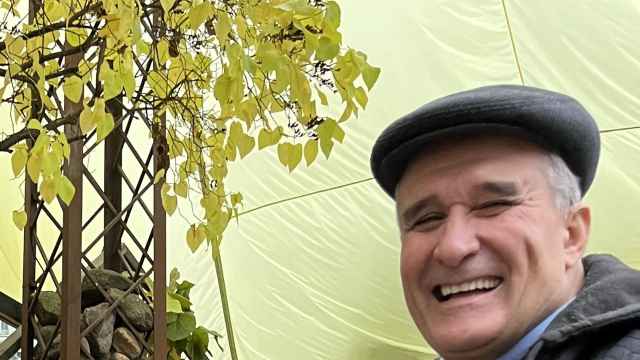Seventy years ago, Tatyana Ustinova and Anysyfor Krupenin, a geologist and a guide respectively from one of Kamchatka's nature reserves, set out to find the source of the Shumnaya River. They took dog sleds deep into the mountains, set up camp, and skied along the riverbed for a long while.
Telling a biographer about that trip, Krupenin said, "We sat on a stone and had a bite to eat. It was time to return to camp for the night. I told Tatyana Ivanovna: 'I'll finish my cigarette so we won't have to stop on the way. Then we can go.' And suddenly on the far shore, steam snorted, water rumbled, and a jet tore diagonally across the river straight for us. We clung to the rocky shore. We inhaled hot steam. What could it be? We looked for the fountain's source and found a crack among the stones. Water bubbled deep inside and eventually filled the gap. Then it spat another jet of water and steam …'It's a geyser,' Tatyana said."
It was April 14, 1941, and they'd just discovered Kamchatka's "Valley of the Geysers," one of the largest concentrations of geysers in the world.
This place is a treasure. It was pristine until a 2007 landslide filled the valley with earth and buried "Firstborn," the geyser that first erupted during Ustinova and Krupenin's visit, under rubble. Basalt cliffs nearby were shattered. The course of the Geysernaya River was permanently changed. "I went there many times before the landslide and returned after," one woman who works in Kamchatka's protected areas told me. "Truly … the valley has changed. It has lost quite a lot."
The valley is internationally regarded as one of the most spectacular places on earth — it rests like a jewel in Kamchatka's crown — but it's accessible only by helicopters, which cost 30,000 rubles ($1,000) per hour. The only locals who can reach the valley are those who work in tourism or nature protection. "More Muscovites than Kamchatkans have been there," a college student told me. "We'll spent our whole lives on the peninsula and never be able to afford seeing that place." Groups of tourists pay dearly for the privilege of walking the slatted wood paths that line the valley.
Last month, I had the incredible luck of hitching a ride to the valley with a group of French tourists. I don't speak French. It didn't matter — I was going to the valley for free, who cares about a translator on top of that? We boarded an Mi-8 helicopter the size and sturdiness of a bus. A young Russian explained our itinerary in light French while the helicopter pilot turned the engine off and on and off and on, occasionally lifting a few meters off the ground and letting us shake in the air before setting us back down. I clung to my cell phone and prayed. Then we were off. We flew over yellow, white and red plains, long stretches of glaciers and two active volcanoes before touching down in an alien land.
The Valley of the Geysers is neon-colored. It holds an acid-blue lake, and the hills we walked over were bright with moss. We stood on a wooden platform to watch one geyser erupt: It began to hiss, the air stank of sulfur, a few jets spat up, and then steam burst over us. Our camera lenses fogged and we all oohed and aahed.
After watching video footage of the 2007 landslide, I had imagined a damaged landscape, but the valley looked fresh, green and steaming. Just imagine being Ustinova and Krupenin in 1941: Imagine sitting on this shore, having a snack, and smoking a cigarette — then hearing a distant rumble and being suddenly drenched with hot water. Imagine stumbling into this place and finding no helipads, park rangers, or paths — finding nothing, you think, until you make a chance discovery of the Valley of the Geysers …
Kept untouched by the naturally forbidding landscape, the necessary restrictions on visiting its surrounding nature reserve, and the shockingly prohibitive cost of access, the valley still feels like paradise. No personal helicopter to get you there today? Me neither, so let's explore it by webcam instead.
A Message from The Moscow Times:
Dear readers,
We are facing unprecedented challenges. Russia's Prosecutor General's Office has designated The Moscow Times as an "undesirable" organization, criminalizing our work and putting our staff at risk of prosecution. This follows our earlier unjust labeling as a "foreign agent."
These actions are direct attempts to silence independent journalism in Russia. The authorities claim our work "discredits the decisions of the Russian leadership." We see things differently: we strive to provide accurate, unbiased reporting on Russia.
We, the journalists of The Moscow Times, refuse to be silenced. But to continue our work, we need your help.
Your support, no matter how small, makes a world of difference. If you can, please support us monthly starting from just $2. It's quick to set up, and every contribution makes a significant impact.
By supporting The Moscow Times, you're defending open, independent journalism in the face of repression. Thank you for standing with us.
Remind me later.





